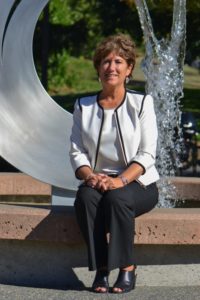On Friday, February 18, Camosun College held their latest Conversations Day, this time around with a focus on reconciliation. The Day of Reconciliation event was a day of learning and awareness-raising for the faculty and educators of Camosun.
Last year marked the beginning of the five-year strategic plan set in place by Camosun president Sherri Bell. Part of the plan is a call for diversity in the Camosun community, including 39 recommendations of how Camosun can support indigenization and bring a deeper understanding and involvement of aboriginal culture to campus. While many of the recommendations remain a work in progress, some have been completed; Camosun’s Day of Reconciliation is one of these recommendations, and, according to Bell, was one of the most productive and positive Conversation Days that the college has held.

“We anticipated having probably about 500 people in attendance and we had over 700 show up,” says Bell. “The day was set up differently than other Conversations Days; we had roundtables and we shared a meal together. When we had the extra 200 people, we had to put out chairs, which was a good thing to see. The response from faculty and staff has been incredible.”
Eyēʔ Sqȃ’lewen director Janice Simcoe feels that the success of the Day of Reconciliation was also due to the interest in reconciliation from faculty and staff.
“The attendance turnout really indicates that staff and faculty at Camosun College are very interested in reconciliation and interested in, ‘What does it mean, what do we need need to know, and what do we need to do in order to engage?’” says Simcoe. “For me, just that message of that large attendance was amazing. The day was supposed to start at 9 am and by 8:45, people were standing before we even began.”
Keynote speaker Chief Robert Joseph and his daughter Shelly talked in great detail with the gathered members of Camosun about reconciliation work, says Simcoe.
“They were so skilled, so articulate,” she says. “I saw that Chief Joseph was able to provide the contextual information about the residential school experience and the process of the Truth and Reconciliation Commission and how it has evolved into what now is reconciliation work that is being done across Canada. He was able to provide that information and integrate his personal story around being a residential school survivor and the impacts it had on him, and the healing process he went through, and his desire to work with Canada toward greater acknowledgement of the indigenous peoples’ and non-indigenous peoples’ shared history.”
Camosun School of Access dean Ian Humphries was part of the task force organizing the 39 recommendations. He says that Bell’s arrival at the school spurned the 39 recommendations into action.
“Shortly after Sherri took on the president’s role, she asked us, ‘What is the college doing with respect to the Truth and Reconciliation calls to action?’ As a result of that question, a small task force of senior leadership members was formed and worked on coming up with the 39 recommendations,” he says. “I meet with all sorts of groups to ensure we put the resources to action.”
Bell says that the college is constantly looking for new ways to get staff, faculty, and students involved so as many people as possible can be educated about indigenization.
“The path to reconciliation includes education, certainly of our staff, but also of our students,” she says. “Some next steps we’re looking at are to continue to indigenize our curriculum and looking at ways to have more students get a deeper understanding about where we were, and where we’re moving to.”
Bell says that she has been working closely with other presidents of post-secondary institutions on Vancouver Island to share their practices of indigenization and what they can improve on.
“At our last meeting there was about five people from each of the five institutions,” she says.
“We met at Royal Roads and the meeting was basically sharing what we’re doing, what the best practices are, and where we have overlap. It’s really wonderful to work with other institutions that have such a strong focus on indigenization, indigenous education, and Truth and Reconciliation. All five institutions have made that part of their focus for the next few years.”
